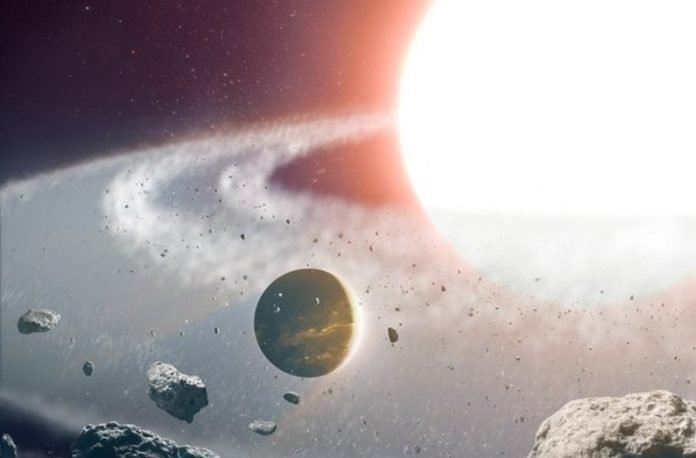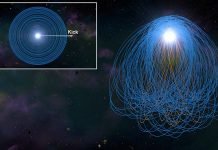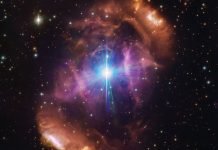
As stars like our sun swell in size with age, they can become large enough to engulf their inner planets.
In May of this year, astronomers used the Zwicky Transient Facility, or ZTF, at Caltech’s Palomar Observatory to catch one such aging star swallowing its planet whole.
Our own sun is expected to similarly eat Mercury, Venus, and possibly Earth, in about 5 billion years.
So, when a different group of scientists found a gas giant peacefully orbiting its aging star, they were confused.
The star, a red giant called 8 UMi, or Baekdu, is at the ripe old age where it should have expanded in size beyond the orbit of the planet, entirely engulfing it. How did the lucky planet survive?
In a new study led by the University of Hawai‘i Institute for Astronomy and including three Caltech authors, the astronomers propose a few theories to explain how the planet, nicknamed Halla, may have escaped a near-certain death.
Their study, published in the journal Nature, is based on data from NASA’s TESS mission, and from the W. M. Keck Observatory and the Canada-France-Hawaii Telescope in Hawai‘i.
One theory holds that the star Baekdu used to be two stars that ultimately merged. Stellar mergers are common in our galaxy, and when a pair of stars does merge, they don’t grow as large as a single star would on its own.
In this scenario, the planet Halla may have once circled two stars; when the stars coalesced, they would not have swelled enough to reach the orbit of the planet.
“Normal stars must expand many times their size before igniting their helium. However, in this case, the extra helium that a red giant gains by swallowing its neighbor star allows it to begin burning helium without having to grow very much.
That may have allowed Halla to survive unscathed,” says Nicholas Rui, a co-author of the new study and a graduate student in the group of Jim Fuller, a professor of theoretical astrophysics at Caltech and another co-author of the study.
“If this is true, the discovery shows not only that planets can exist around pairs of stars but that they can continue to survive when those stars violently merge together.”
Another theory proposed by the team suggests that the planet could have risen out of the ashes of an explosive stellar merger.
The hypothesized “second-generation” planet would have formed from material spewed out in the collision between stars.
Either way, the new results testify to the ubiquity of planets in our galaxy. “This shows that planets seem to exist almost anywhere they can exist,” Fuller says.
The Nature study is titled “A close-in giant planet escapes engulfment by its star.” Rui’s work on this study was funded by the National Science Foundation. Andrew Howard, a professor of astronomy at Caltech, is a co-author.
Follow us on Twitter for more articles about this topic.
Written by Whitney Clavin.




